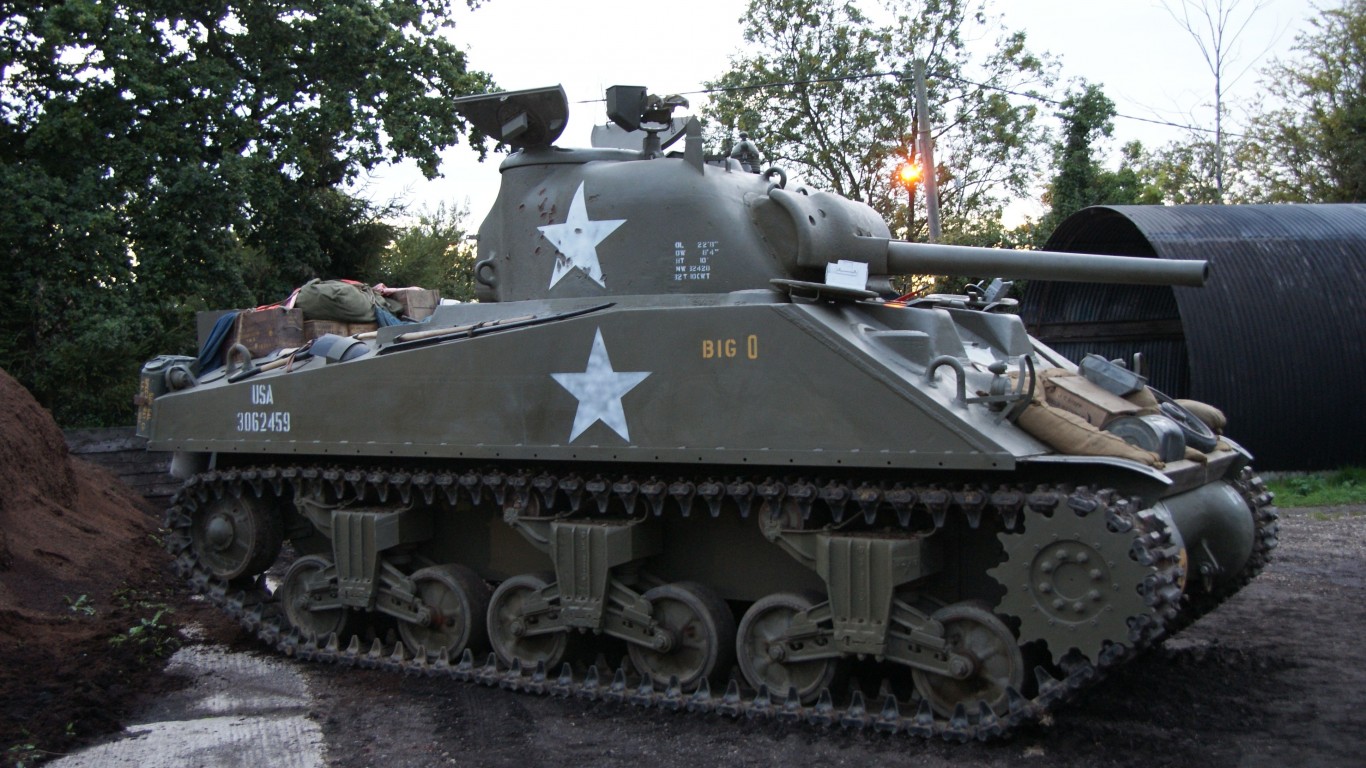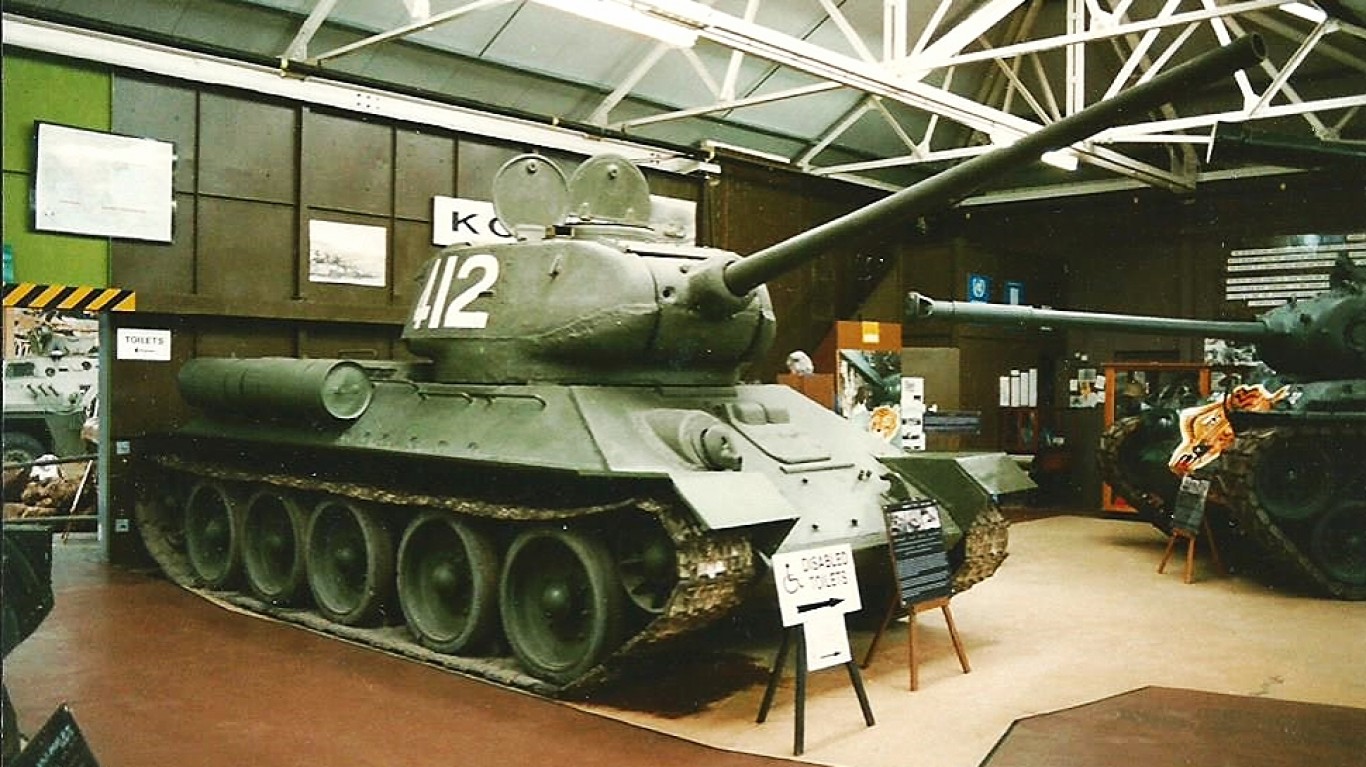
As the war in Ukraine drags on well into its second year, Russian losses continue. One think tank estimates that more than 40% of the country’s prewar fleet of tanks have been lost.
These vehicles are crucial to Russian operations, and each one lost represents a significant financial and tactical setback. For the past century, every war fought has heavily relied on vehicles for combat, supplies, movement, and much more. Advancements in military vehicle technology may have turned the tide of some of the largest conflicts in history.
To determine the most important vehicles in the history of war, 24/7 Wall St. reviewed land-based vehicles that had a major impact on the technology and outcome of warfare using information from Hot Cars, Military.com, Haynes, The Imperial War Museum, The National WWII Museum, and more.
World War I broke out shortly after automobiles became commonplace, and military leaders quickly realized the impact these vehicles could have on the battlefield. It wasn’t long before engineers worked on ways to produce armed and armored vehicles that would protect troops as well as have some attacking capabilities while on the go. (This is the largest tank battle in history.)
Many of these vehicles were invented to serve a specific purpose. Some were able to quickly get messages to strategic points on the front lines. Others were designed to move troops while shielding them from enemy fire.
As technology advanced, so did these machines. World militaries produced vehicles with thicker armor, faster speeds, more rugged capabilities, and more firepower than ever before. Some of these advancements proved to have significant civilian applications as well. These are the popular products you never knew were invented by the military.
Click here to see the vehicles that forever changed how wars are fought.

1. Mark I Tank
> Introduced in: World War I
The trenches of World War I made it nearly impossible for troops to advance, as both sides had their weapons ready if anyone peered over the fortifications. The British Navy devised in 1915 a new type of armored vehicle that rolled on a continuous track. Communications referred to these vehicles as “tanks,” like water tanks, to ensure their secrecy. By 1916, British soldiers rolled the Mark I Tank into battle. Early models were unreliable, but by 1918, there were over 2,500 used in the war.
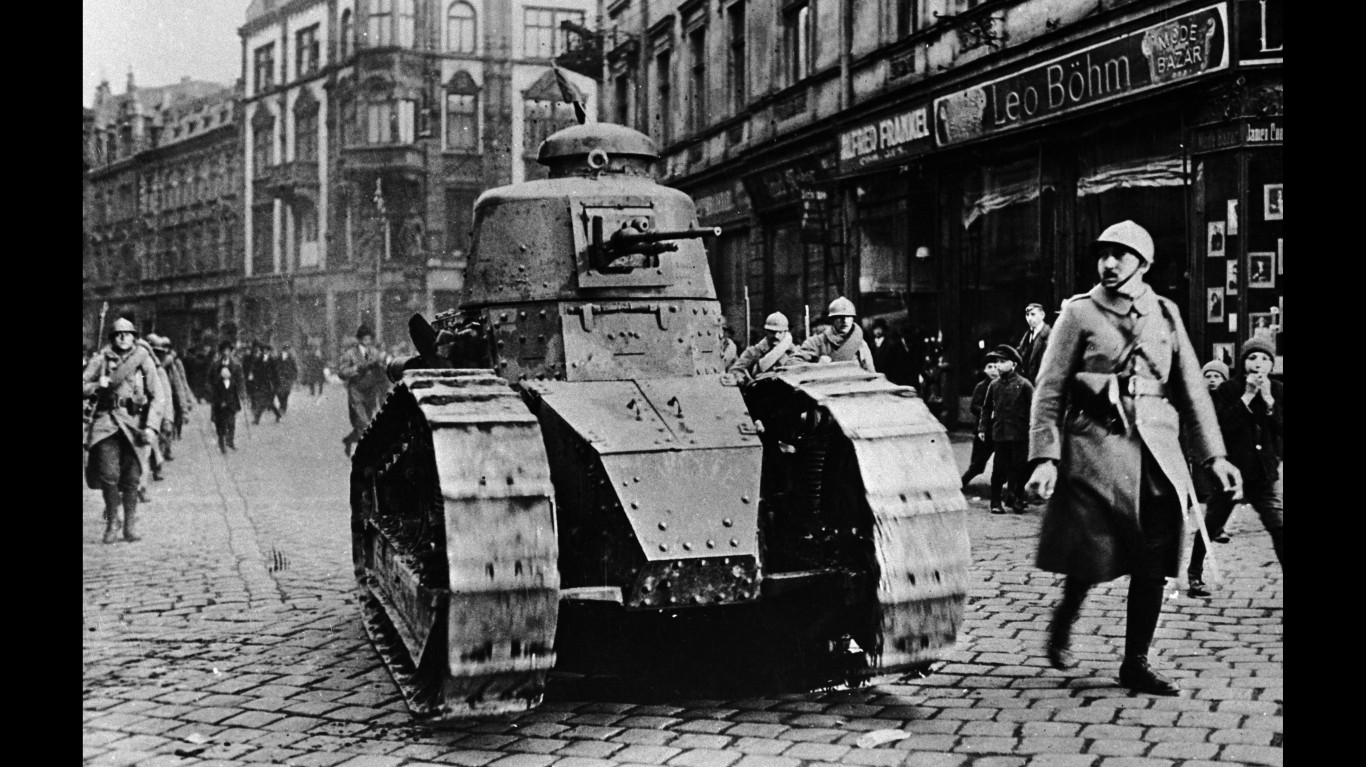
2. Renault FT light tank
> Introduced in: World War I
Though the British may have invented the earliest version of the tank, the French made their own version early on in World War I – except the French tank had significant attacking capabilities as well. The Renault FT light tank was the first tank to include the key addition of a 360° rotating turret, which has since become a standard feature in virtually every tank. More than 3,000 were used in World War I.
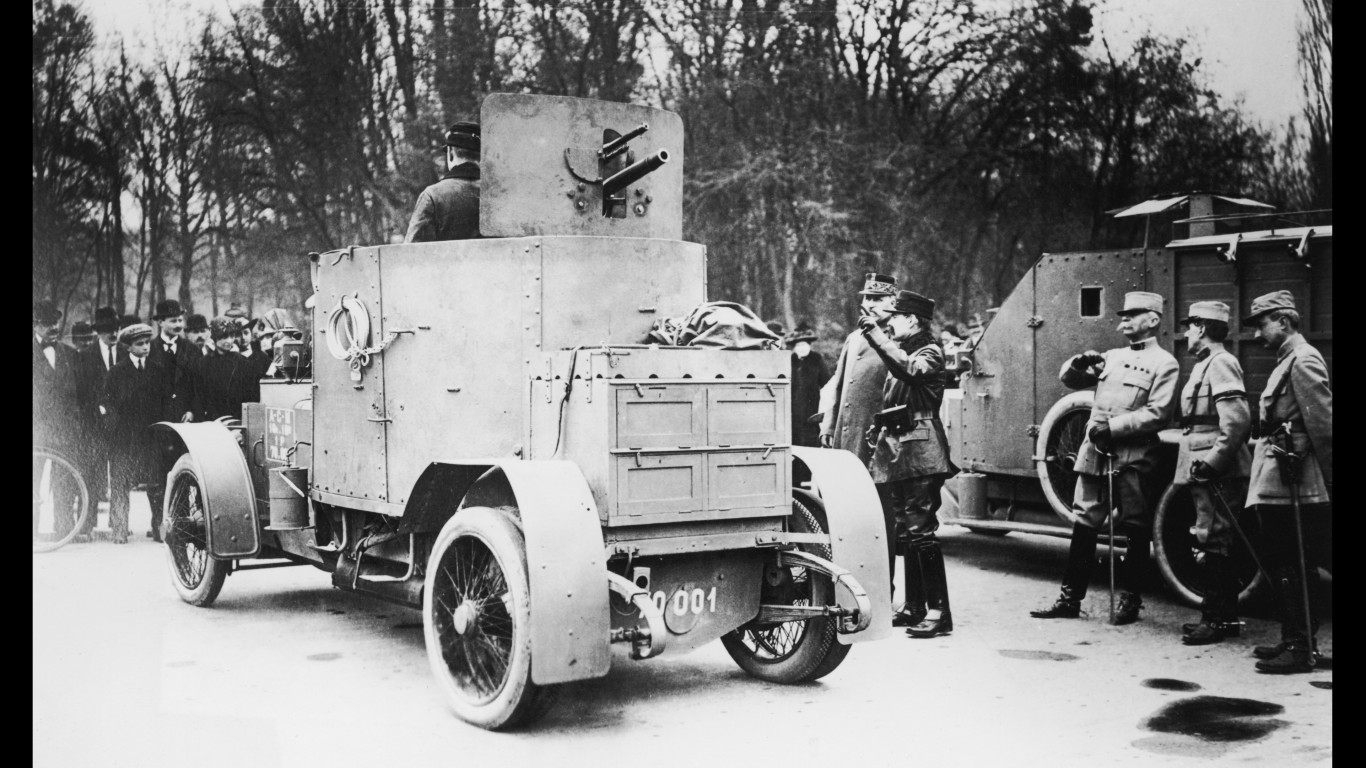
3. Rolls-Royce Armoured Car
> Introduced in: World War I
The very first Rolls-Royce Armoured Car was reportedly cobbled together in 1914. Ordered to help spot enemy troop movements, a Royal Naval Air Service squadron based in Ostend, Belgium, equipped a Rolls-Royce with a machine gun and boiler plates as armor. The vehicle proved to be so vital that more were ordered for battle. Though they were not suited for the trenches, Rolls-Royce ACs proved to be incredibly important in other types of fighting.
[in-text-ad-2]
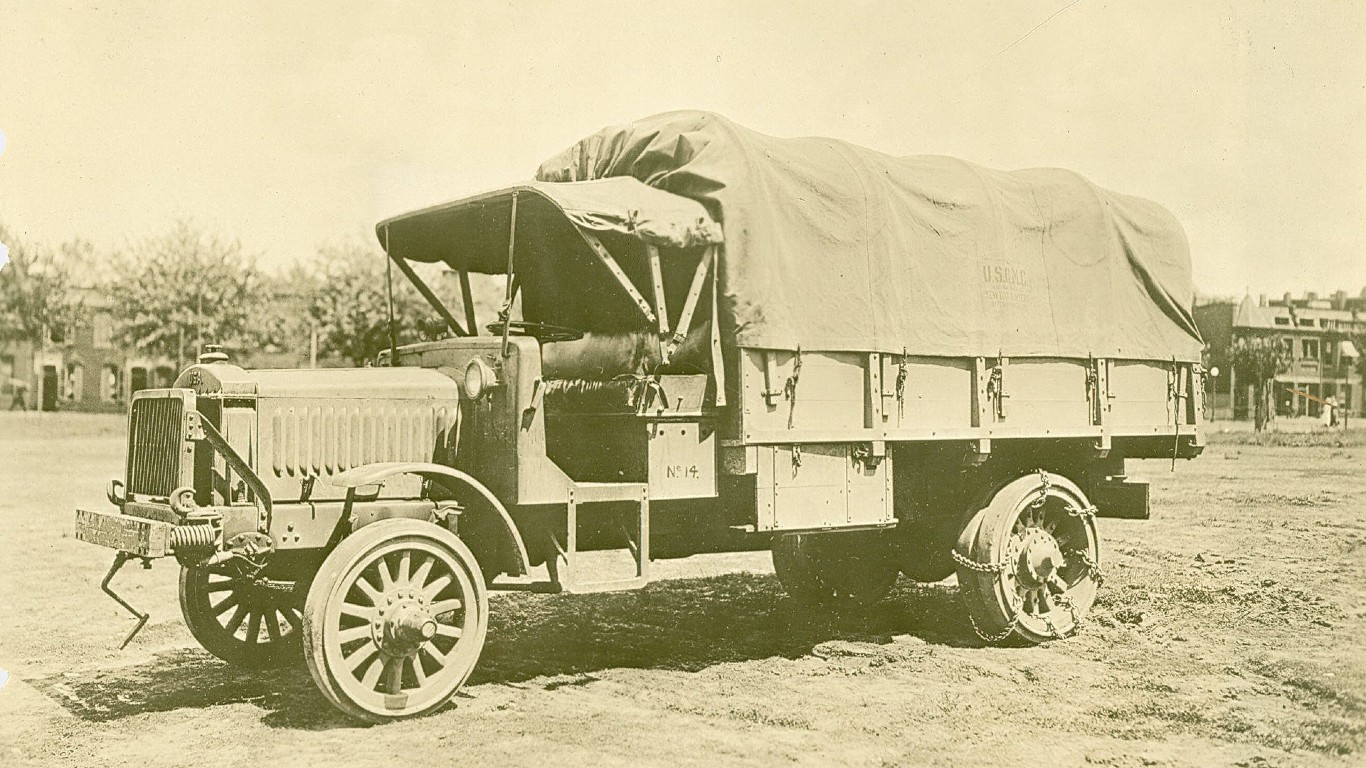
4. Liberty Trucks
> Introduced in: World War I
Liberty Trucks were large 5-ton transport units first developed for World War I. They are significant in the history of warfare because they were the U.S. military’s first ever standardized vehicle, meaning dozens of different factories produced parts, and 15 companies were all able to assemble identical trucks, streamlining the production and maintenance processes.
5. Harley-Davidson WLA
> Introduced in: World War II
The Harley-Davidson WLA reigns as the most-produced military vehicle of all time, with over 90,000 motorcycles produced beginning in 1940. The bikes were created for quick maneuvering through all types of terrains, including North African deserts and European forests. Motorcycle couriers became one of the main communication lines in the war. The WLAs were often equipped with sidecars to quickly drive officers around,. Machine guns were sometimes attached to the WLAs as well.
[in-text-ad]
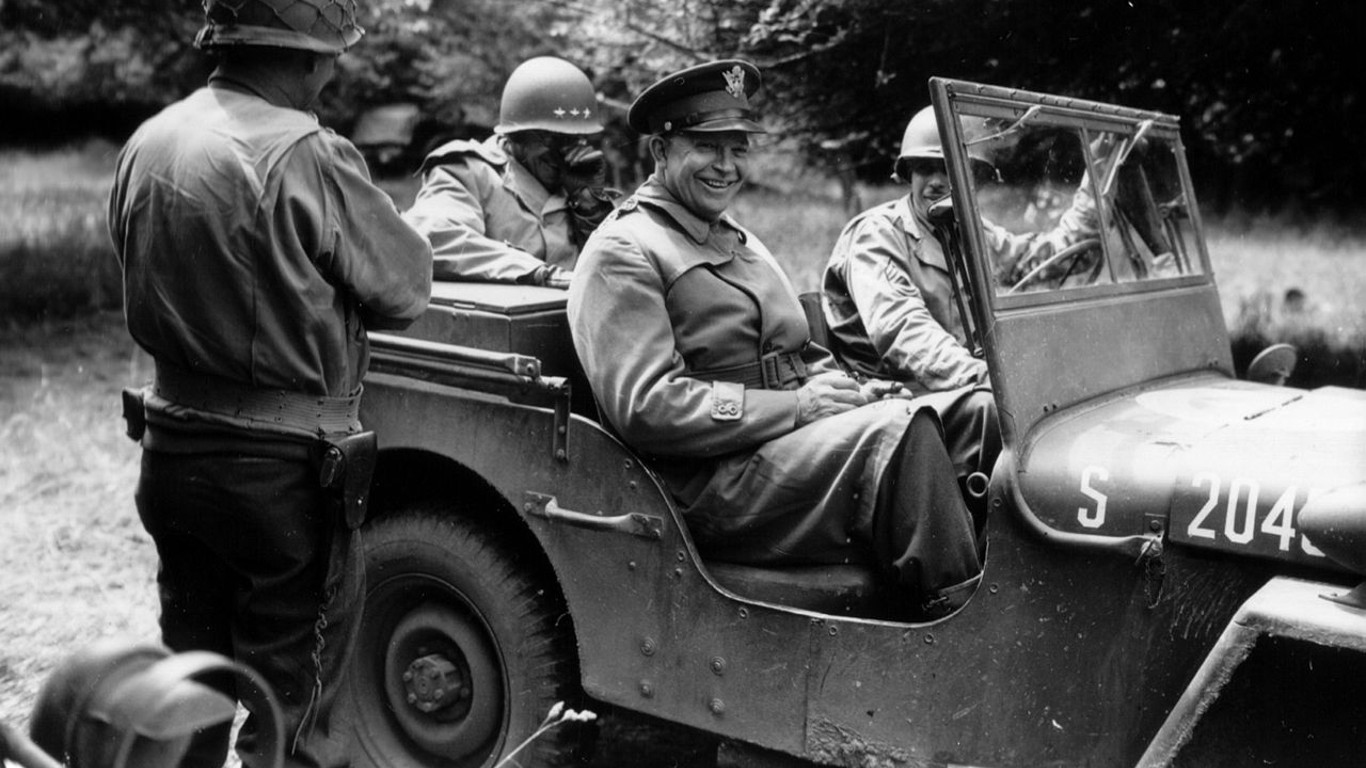
6. Willys Jeep
> Introduced in: World War II
The Willys MB was a tough, efficient 4×4 vehicle that is now better known as the first incarnation of the Jeep. U.S. Army chief of staff during World War II, Gen. George C. Marshall, called the vehicle “America’s greatest contribution to modern warfare.” The Jeep proved remarkably useful as a vehicle for combat, patrol, transit, ambulance duty, and much more. Its utility helped phase out the use of motorcycles and horses in warfare.
7. M4 Sherman Tank
> Introduced in: World War II
More M4 Sherman Tanks rolled off American production lines than any other tank in history – nearly 50,000 in total. Though it did not have the same quality of armor and guns that many other tanks of the era had, its main advantage was its simple design. This allowed multiple car manufacturers to mass-produce the M4 Sherman, giving U.S. troops a numbers advantage over the German Panzers.

8. GMC DUKW
> Introduced in: World War II
The GMC DUKW, known as “The Duck,” was a partially-amphibious vehicle used in World War II. The U.S. Army needed a way to quickly traverse land and rivers across Europe as bridges were often destroyed. Enter the DUKW, a GMC 6×6 that was adapted to fit a customized boat hull. The vehicle allowed soldiers to cross land and water more efficiently than ever before.
[in-text-ad-2]
9. Dodge WC-54 Ambulance
> Introduced in: World War II
The Dodge WC-54 Ambulance served as the main medical transport vehicle for the U.S. throughout World War II. The large trucks had room for six seated patients or four stretchers. Even after World War II, some WC-54s remained in service – the U.S. used a handful during the Korean War, and other European countries used them into the 1960s.
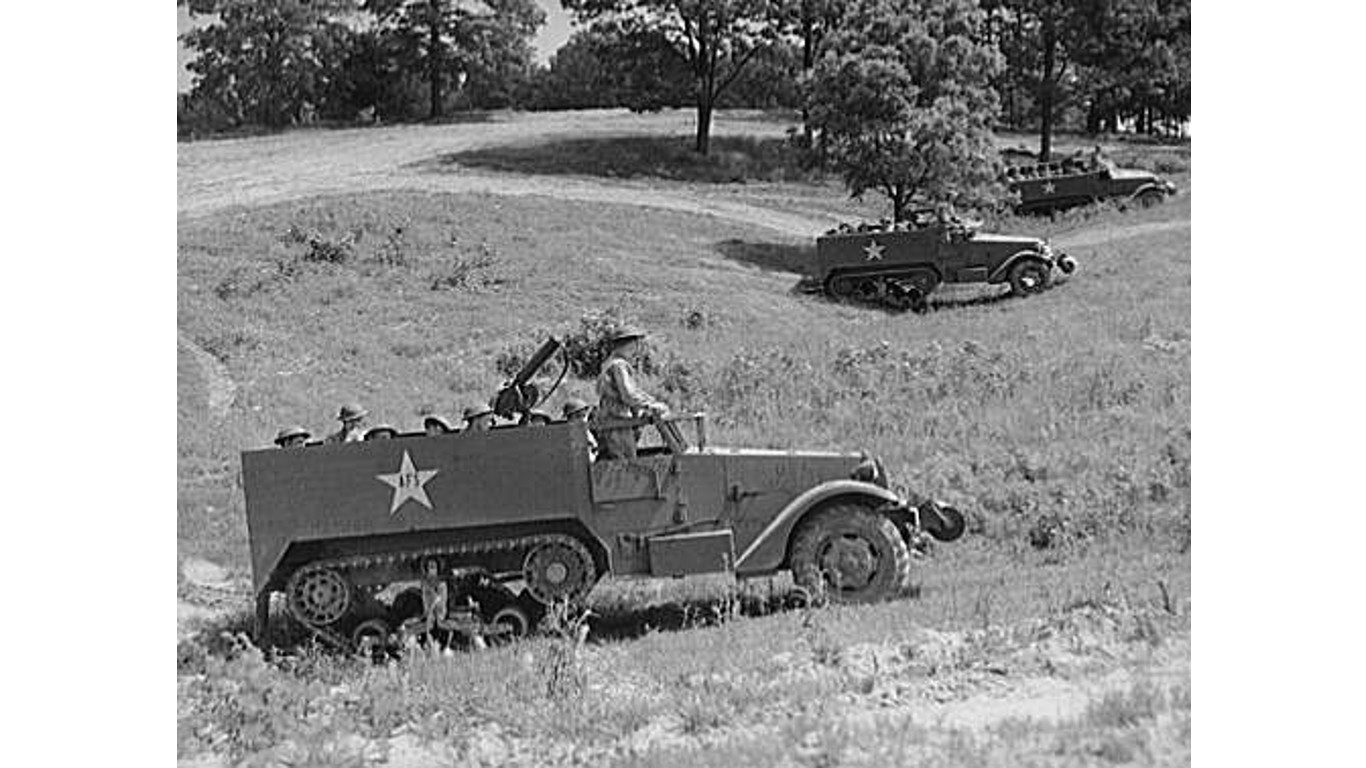
10. White M-3 Half-Track
> Introduced in: World War II
The White M-3 Half-Track was used as an armored personnel carrier used throughout World War II. The boxy vehicle was covered in armor plating and featured wheels on the front but a tank-like track on the back. This unique design allowed the half-tracks to push through all kinds of muddy or rocky terrain. They were also armed with machine guns, used to support assaults on enemy positions.
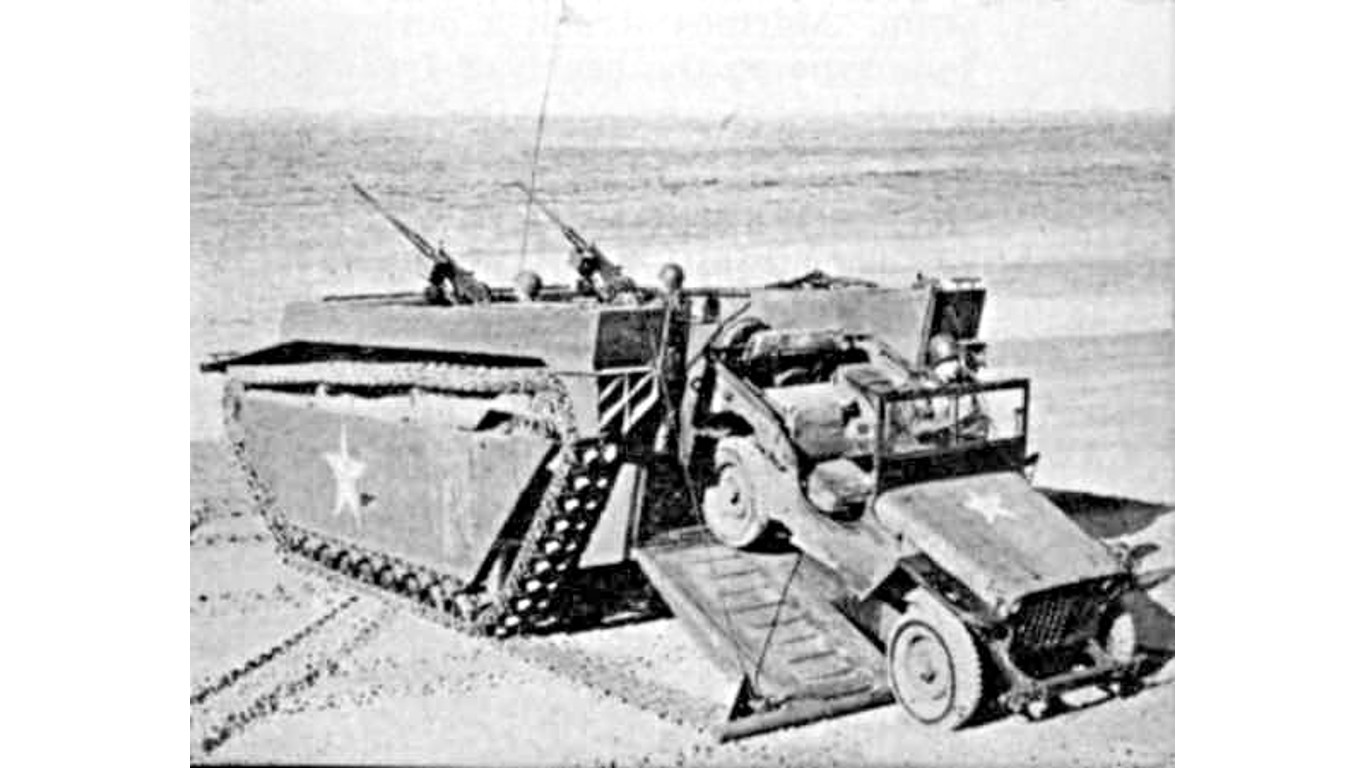
11. LVT4 Landing Vehicle
> Introduced in: World War II
The LVT4 landing vehicle was so called because it was needed to help American troops land on islands held by Japan throughout the Pacific Theater of World War II. Initially known as Alligators, these vehicles were designed to power over sharp reefs around the islands, while their heavily-armored body protected troops from incoming fire. A ramp in the rear provided a safer way to exit while under fire.
12. Volkswagen Type 82 Kübelwagen
> Introduced in: World War II
It wasn’t just the U.S. and their allies that made important and impactful vehicles during World War II. Germany produced the Volkswagen Type 82 Kübelwagen – a 4×4 created to be resistant to all different types of weather like mud and snow. Its configuration also made it less susceptible to gunfire, while also featuring an auxiliary fuel tank to keep it running even in the cold of the Russian winter.
[in-text-ad-2]
13. T-34
> Introduced in: World War II
The Soviet T-34 is one of the most important vehicles in the history of war because its capability and firepower made it the most fearsome vehicle of the WWII era. It featured a 76.2 mm gun that could take out other tanks, while its armor could survive direct hits from existing anti-tank weapons. When the Germans advanced towards the Soviet Union, these tanks were key in repelling the German Army from the Eastern Front.

14. Bradley Fighting Vehicle
> Introduced in: Cold War
The Bradley Fighting Vehicle, designed to battle over long distances, is unique for its combination of durability and firepower. The BFV was first rolled out during the 1980s and saw its first action in the First Gulf War. It was later used in Iraq and Afghanistan. Though intended as an infantry fighting vehicle, the Bradley features both medium and long-range weapons with enough firepower to take on tanks.
[in-text-ad]

15. Humvee
> Introduced in: Various
“Humvee” is the nickname given to the High Mobility Multipurpose Wheeled Vehicles used by the U.S. military beginning in 1989 in the invasion of Panama and later the Gulf War. The Humvee is designed to cover all kinds of terrain while shielding passengers from all manner of attacks – all while requiring minimal repairs. The Humvee, like the Jeep before it, went from a military vehicle to civilian in 1992, when General Motors rolled out the Hummer.

16. Cougar 6×6 MRAP
> Introduced in: Wars in Afghanistan and Iraq
Improvised explosive devices were killing and injuring soldiers during the War on Terror in Afghanistan and Iraq. To deal with the threat of IEDs, General Dynamics devised the Cougar 6×6 MRAP, which stands for Mine Resistant Ambush Protected. The vehicle can withstand ballistic and explosive attacks, with room for up to 10 passengers.
Are You Still Paying With a Debit Card?
The average American spends $17,274 on debit cards a year, and it’s a HUGE mistake. First, debit cards don’t have the same fraud protections as credit cards. Once your money is gone, it’s gone. But more importantly you can actually get something back from this spending every time you swipe.
Issuers are handing out wild bonuses right now. With some you can earn up to 5% back on every purchase. That’s like getting a 5% discount on everything you buy!
Our top pick is kind of hard to imagine. Not only does it pay up to 5% back, it also includes a $200 cash back reward in the first six months, a 0% intro APR, and…. $0 annual fee. It’s quite literally free money for any one that uses a card regularly. Click here to learn more!
Flywheel Publishing has partnered with CardRatings to provide coverage of credit card products. Flywheel Publishing and CardRatings may receive a commission from card issuers.
Thank you for reading! Have some feedback for us?
Contact the 24/7 Wall St. editorial team.

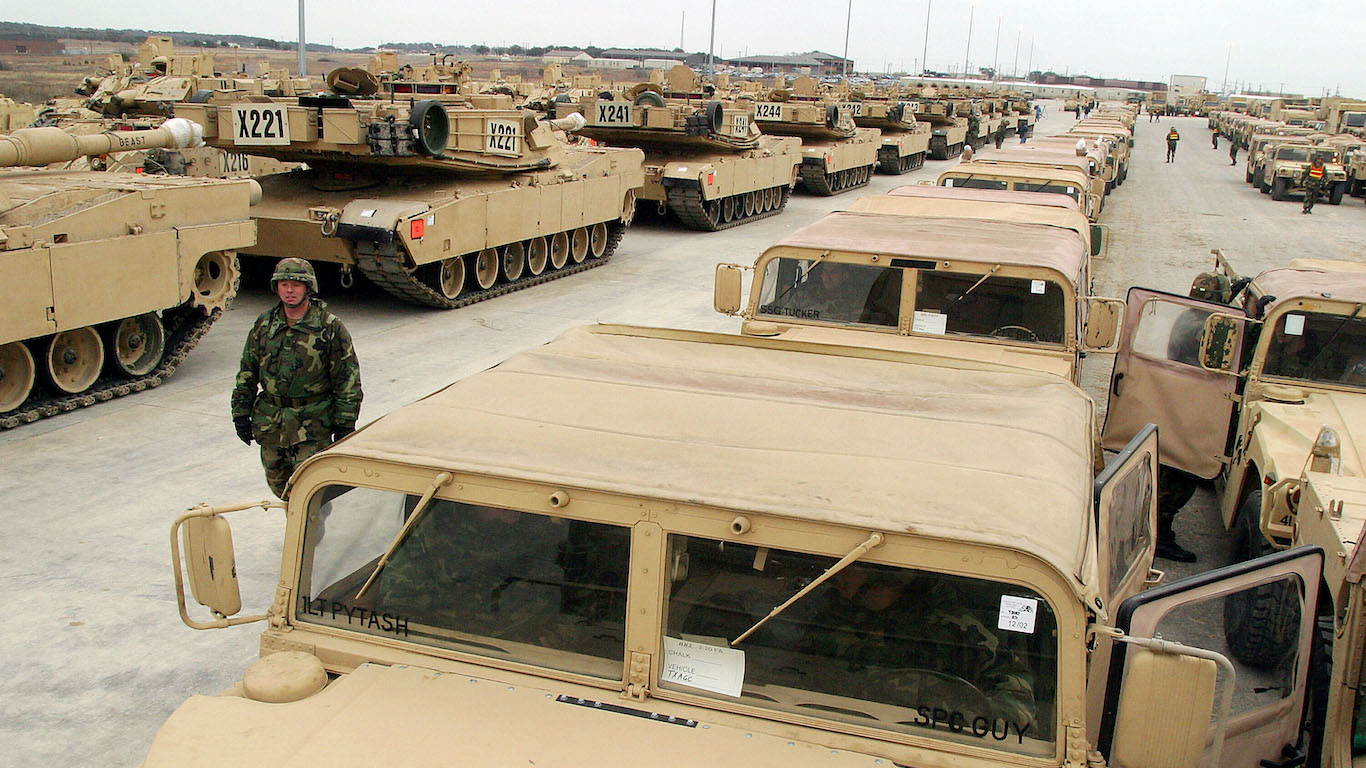 24/7 Wall St.
24/7 Wall St.